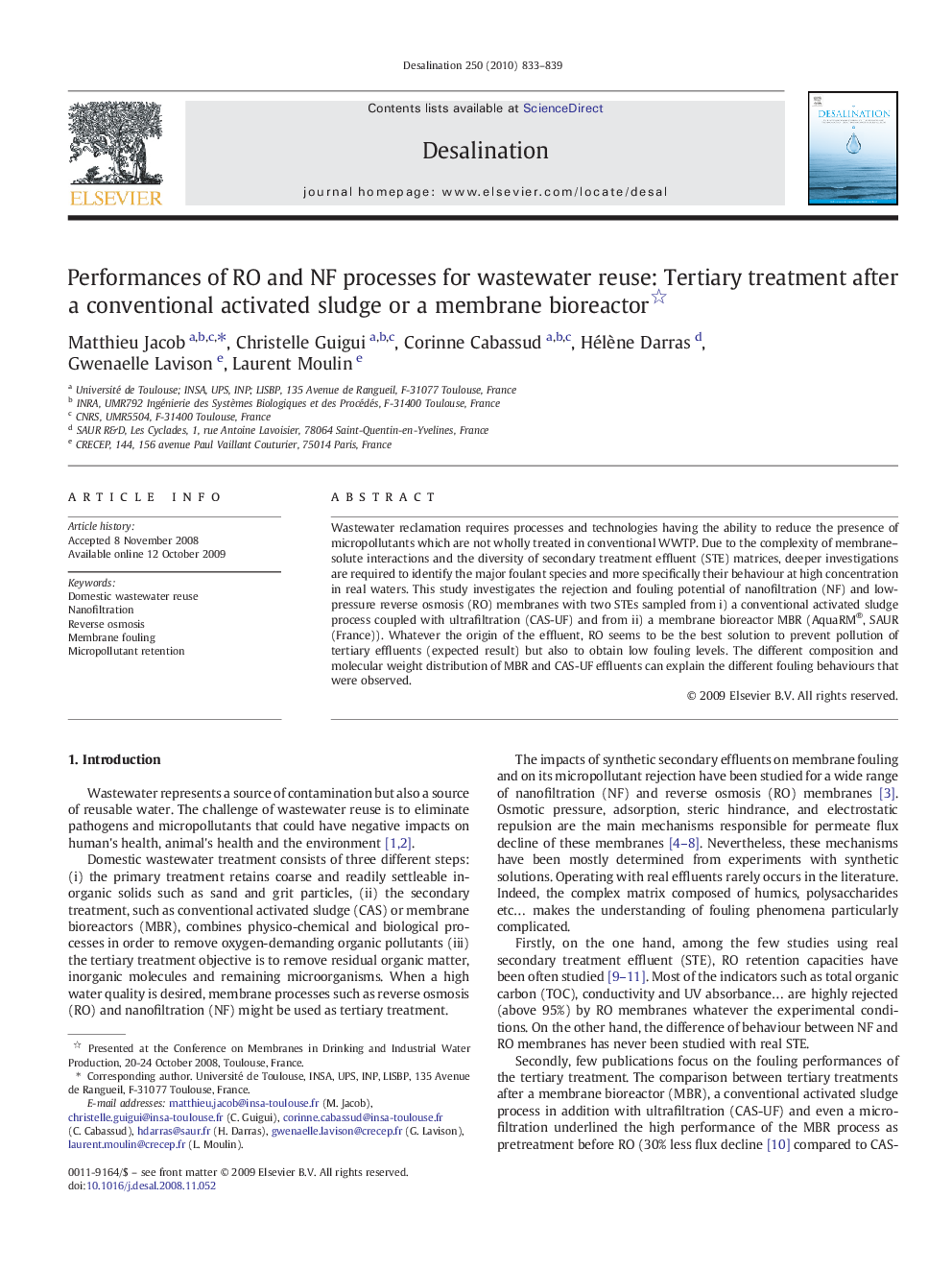| Article ID | Journal | Published Year | Pages | File Type |
|---|---|---|---|---|
| 626101 | Desalination | 2010 | 7 Pages |
Abstract
Wastewater reclamation requires processes and technologies having the ability to reduce the presence of micropollutants which are not wholly treated in conventional WWTP. Due to the complexity of membrane-solute interactions and the diversity of secondary treatment effluent (STE) matrices, deeper investigations are required to identify the major foulant species and more specifically their behaviour at high concentration in real waters. This study investigates the rejection and fouling potential of nanofiltration (NF) and low-pressure reverse osmosis (RO) membranes with two STEs sampled from i) a conventional activated sludge process coupled with ultrafiltration (CAS-UF) and from ii) a membrane bioreactor MBR (AquaRM®, SAUR (France)). Whatever the origin of the effluent, RO seems to be the best solution to prevent pollution of tertiary effluents (expected result) but also to obtain low fouling levels. The different composition and molecular weight distribution of MBR and CAS-UF effluents can explain the different fouling behaviours that were observed.
Related Topics
Physical Sciences and Engineering
Chemical Engineering
Filtration and Separation
Authors
Matthieu Jacob, Christelle Guigui, Corinne Cabassud, Hélène Darras, Gwenaelle Lavison, Laurent Moulin,
